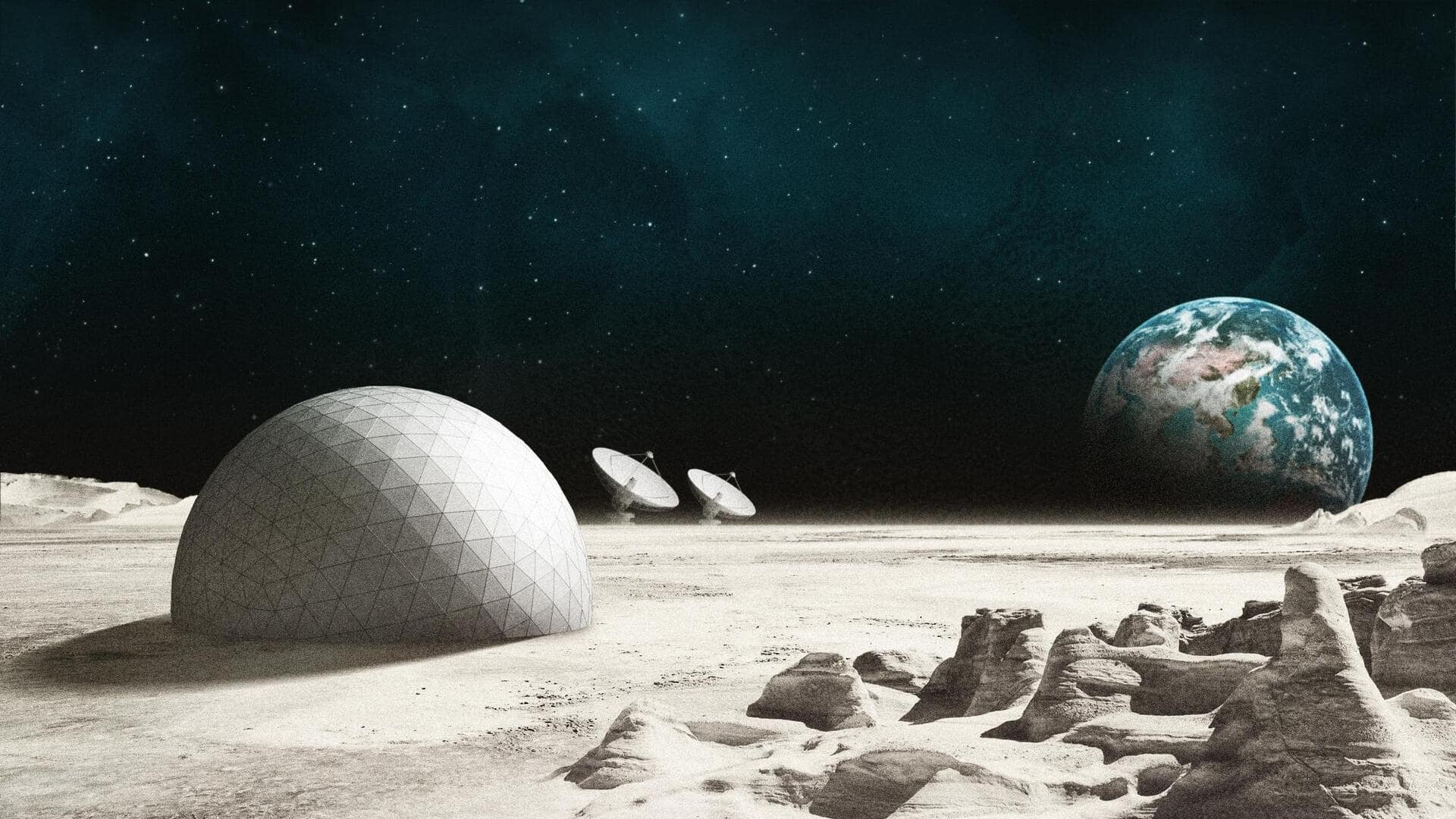
Bacteria could help build and maintain cities on Moon—Here's how
What's the story
Scientists are looking into the possibility of using lunar regolith, a layer of loose dust and rocks on the Moon's surface, as a primary building material for future Moon outposts. The idea is to cut down on the cost of transporting tons of materials from Earth. Now, researchers at the Indian Institute of Science (IISc) have developed an innovative approach to constructing and maintaining lunar habitats using bacteria. This method could significantly enhance the sustainability of future Moon bases.
Innovative solution
Bacteria could help fix cracks in lunar bricks
In a recent study, IISc researchers found that bacteria could be used to repair cracks in lunar regolith bricks. They first used Sporosarcina pasteurii, a soil bacterium, to create bricks from regolith simulant. The bacteria convert urea and calcium into calcium carbonate crystals, which, when mixed with guar gum, act as a binding agent to form solid bricks. However, these bricks are susceptible to damage from extreme lunar temperature fluctuations and micrometeorite impacts.
Repair solution
Bacteria-based sealant for lunar bricks
To tackle the problem of Moon brick damage, the scientists used Sporosarcina pasteurii to develop a sealant for filling cracks and holes in the bricks. They created artificial damage in bricks made from lunar regolith and applied a slurry containing the bacteria, guar gum, and regolith simulant. Over several days, the bacteria produced calcium carbonate, effectively filling the cracks and restoring 28% to 54% of the bricks' original compressive strength.
Unknown factors
Questions remain about bacteria's behavior in space
This biorepair technique offers a sustainable solution for maintaining lunar structures, reducing the need for transporting repair materials from Earth. Now, the researchers are left with questions regarding how these bacteria would behave in extraterrestrial conditions. To address some of these queries, the team plans to send a sample of Sporosarcina pasteurii into space as part of India's upcoming Gaganyaan mission, scheduled for 2026.